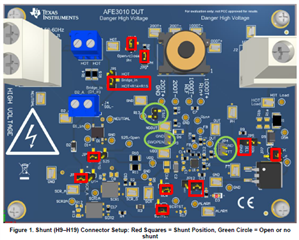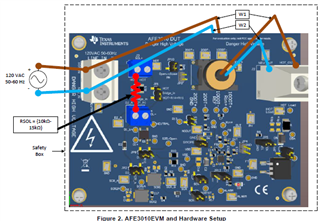Other Parts Discussed in Thread: AFE3010
Hi,
I am working on AFE3010EVM to generate Ground fault Current interrupt and its working fine. But my point is without Connecting AC Line to PH pin of AFE3010 is it possible to Achieve Same Results.
Because When I remove JP9 Jumper, SCR is not generating Pulse During Fault Condition.



